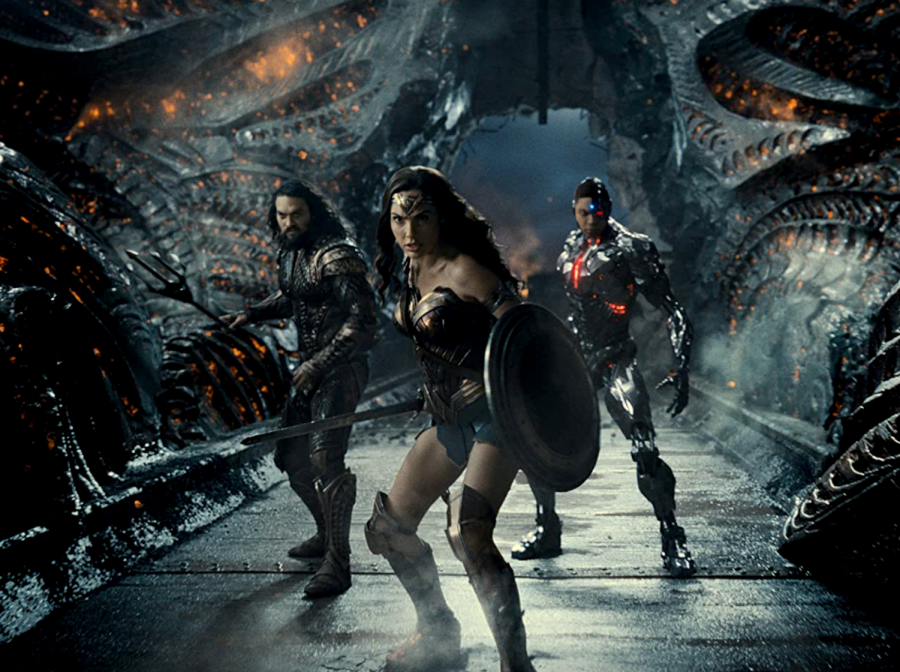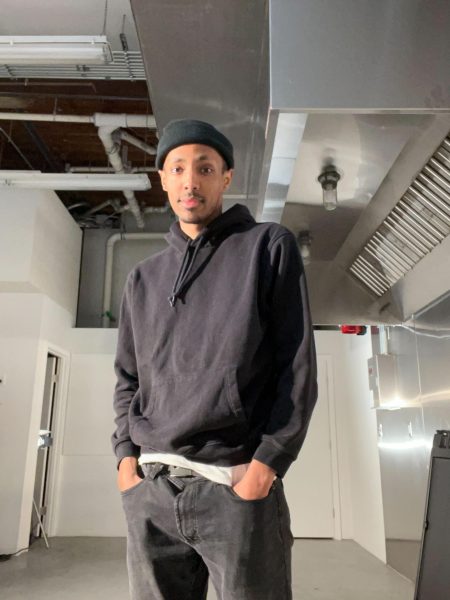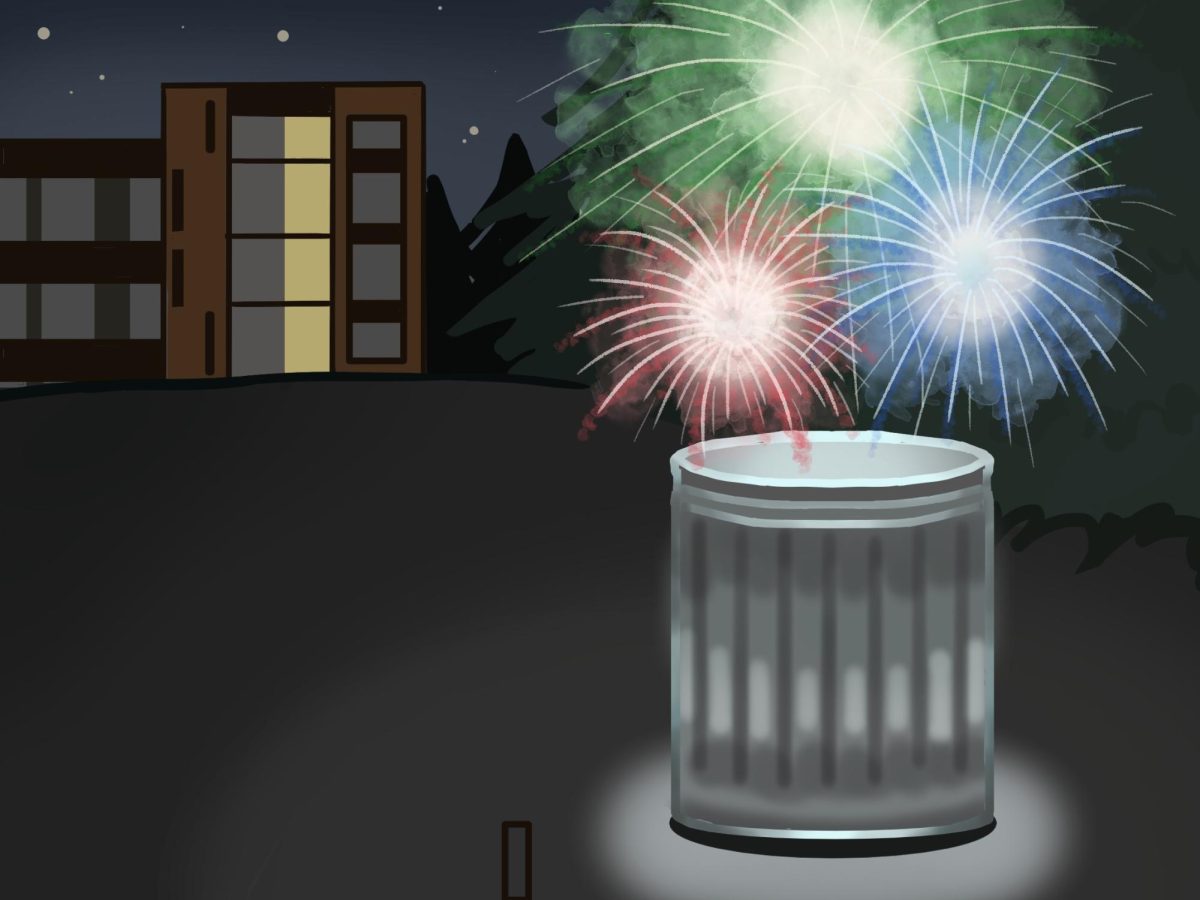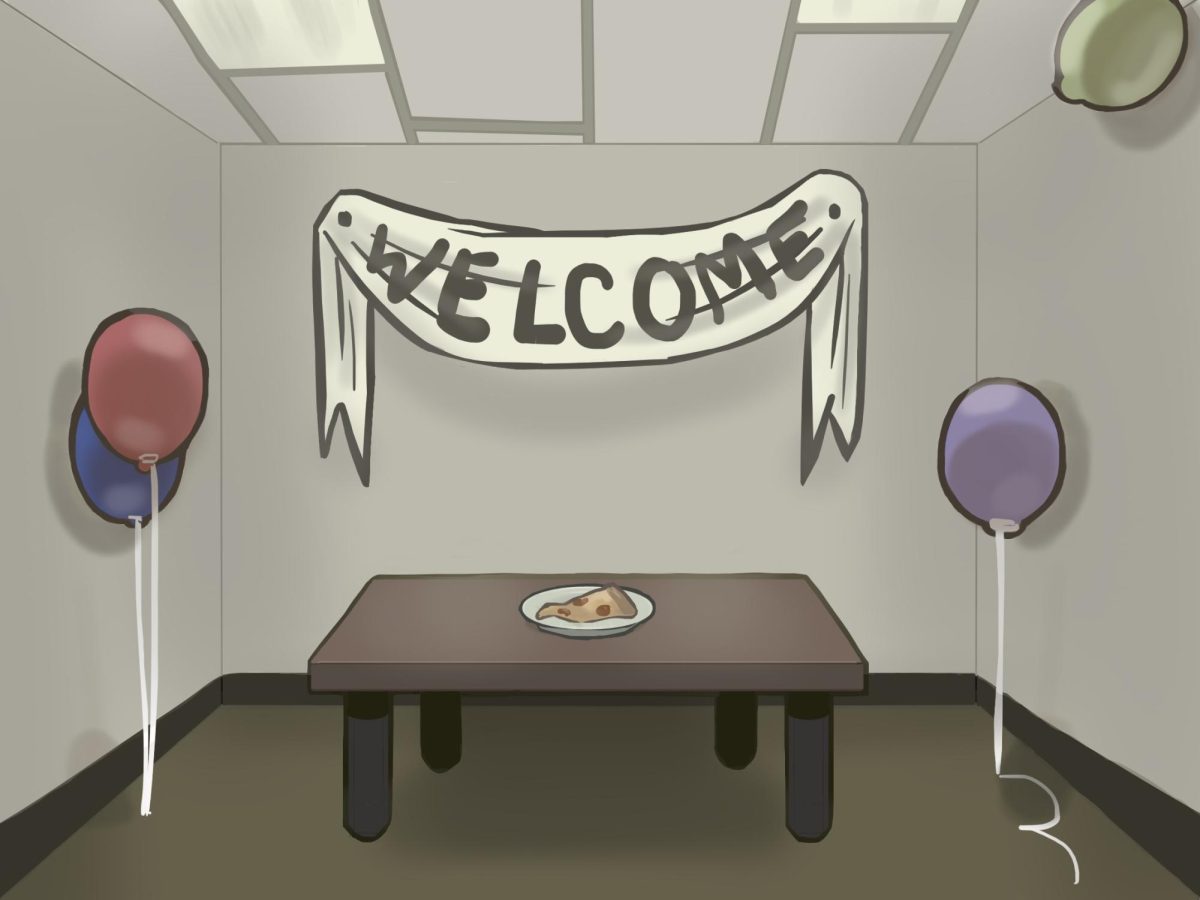“Justice League”: A Tale of Two Visions
From left to right: Jason Momoa, Gal Gadot and Ray Fisher
May 15, 2021
On March 18, Zack Snyder’s “Justice League” hit HBO Max, ushering plenty of hype over its potential to revive the DC Extended Universe.
The differences between Snyder’s “Justice League” (also known as the “Snyder Cut”) and director Joss Whedon’s 2017 theatrical release of the same film are so drastic that they almost feel like separate movies.
From its change in tone to its restoration of pivotal plot points, the Snyder Cut revisits Snyder’s original vision of the story, which had been halted due to his premature departure from the project.
When the endeavor was handed over to Whedon (“The Avengers”), a string of detrimental rewrites and reshoots ensued despite the original script having already been filmed.
Plot
“Justice League” takes place following the events of “Batman v Superman.”
With Superman dead, Batman (Ben Affleck) and Wonder Woman (Gal Gadot) are caught in a race to recruit allies and find three “mother boxes” left behind by the villain Steppenwolf in his failed conquest of Earth. When joined together, the deadly mother boxes are capable of terraforming the planet.
Unlike Marvel’s mostly-human Avengers, DC’s Justice League consists of otherworldly heroes such as Cyborg (Ray Fisher), a star athlete-turned-robot hybrid; Aquaman (Jason Momoa), the bastard son of the queen of Atlantis; and The Flash (Ezra Miller), a speedster that can transcend space-time.
What Went Wrong?
Much of Whedon’s “Justice League” too-heavily mirrors his directorial work on the “Avengers” films, making for some ironic similarities.
This is most evident in a scene where The Flash lands on top of Wonder Woman in a moment reminiscent of “Age of Ultron” where the Hulk falls on Black Widow in his base form. Both sequences create unnecessary tension between the pairs without contributing anything significant to character development.
Additionally, a besieged family similar to Wanda Maximoff’s is highlighted at several points throughout the film as Steppenwolf bases his conquest on Earth out of their town.
Whedon’s 2017 cut, despite hitting a healthy two hours, also manages to eliminate some of the most integral parts of the plot: Cyborg, Aquaman and Flash’s backstories.
Spotlight On Cyborg
The Snyder Cut devotes much more attention to these origins, with a particular emphasis on Cyborg.
Along with his humble beginnings as Vic Stone, star quarterback at Gotham High, a crucial aspect of Cyborg’s story is his connection with his mother. He loses her in a car accident, leaving him on the brink of death.
Vic’s father, desperate to save his son’s life when the accident occurs, decides to use a mother box he’d been studying to give his son a second chance. The experiment succeeds, but not without stripping away a piece of Vic’s humanity.
Audiences also receive hints of Vic’s heroic potential when he’s shown intervening with school records to improve the grades of a classmate whose trauma is putting the quality of her work — and college aspirations — at risk.
The Snyder Cut also provides more context for Steppenwolf’s sinister motivation with the addition of another villain, Darkseid, who incorporates Steppenwolf into his ruthless search for the “anti-life equation”: a formula providing those with its knowledge the power to dominate the will of any sentient race.
Will There Be a Sequel?
In June 2020, Ray Fisher tweeted a 2017 video of himself assuring fans at San Diego Comic Con that Whedon was a good choice to take over for Snyder. In the caption, he wrote that he’d like to “forcefully retract every bit of” the statement.
Since then, things have gotten a bit more complicated. Cyborg’s solo film has been scrapped, and Fisher’s role in “The Flash” is cut.
Additionally, “Justice League”’s Ben Affleck and Henry Cavill left their roles as Batman and Superman due in part to their dissatisfaction with Warner Brothers’ handling of the properties. This leaves only Wonder Woman, Aquaman and The Flash to continue in the franchise.
On top of that, Gadot recently claimed that Whedon threatened her career.
Along with Fisher’s testimony and a number of anonymous accusations, it’s evident that things took a turn for the worse following Snyder’s departure. And although there isn’t much hope for a sequel, Snyder’s “Justice League” is still a great stand-alone comic book movie.
While the pacing takes a hit as a result of its four-hour runtime, the film more than makes up for it with excellent writing that puts it in a league of its own. The Snyder Cut gives everybody a chance to shine — and each scene feels more meaningful because of it.
Zack Snyder’s “Justice League” can be streamed on HBO Max.







